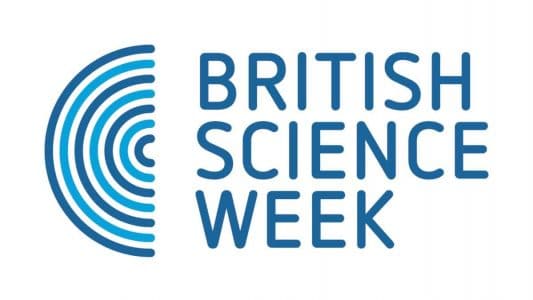British Science Week 2020: 6 women who have smashed stereotypes in science
This year, British Science Week is celebrating the diverse people and careers in science and engineering. To coincide with International Women’s Day on 8 March and British Science Week 2020, Sublime Science takes a look at the women who have been smashing stereotypes within their fields both in the history books and the scientific world today.
Mary Anning (1799 – 1847)
Early British palaeontologist Mary lived and worked in Lyme Regis where she collected fossils, a skill her father taught her. She would sell them to tourists, and, after her father died, it was her family’s only source of income.
While scouting, she made a number of important finds in the Jurassic era marine fossil beds, including the skeleton of the first recognised ichthyosaur, two plesiosaurs and the first pterosaur found outside of Germany.
However, Mary’s gender and social status prevented her from being able to be accepted by the scientific world at the time, meaning that she didn’t receive the credit for her contributions as her findings were often published by men who didn’t name her. What’s more, in a time when society’s views were influenced by the Bible, Anning’s findings which supported evolution rather than creationism were radical. As such, she defied convention in every aspect of her life – a woman who truly embodies the theme of British Science Week 2020.
She died in a state of poverty, with her work predominantly unrecognised. It was only in 2010, 163 years after her best, that Mary finally received the recognition she deserved when the Royal Society named her one of ten British women who have most influenced the history of science.
Marie Curie (1867 -1934)
A superstar within the history of science, Marie was a Polish-French physicist who became the only person to win two Nobel Prizes in two different disciplines – physics and chemistry.
Together with her husband, she discovered radioactivity, allowing people to see energy for the first time. She also discovered two new elements, polonium and radium, which resulted in huge contributions in the advancement of cancer treatment.
Unsurprisingly, she won countless prizes over her lifetime and was awarded multiple honorary degrees. In 1930, she allowed her name to be used for a brand new hospital in London which was staffed completely by women and exclusively treat female cancer patient, creating an incredible legacy.
Alice Ball (1892 – 1916)
Chemist Alice Ball was the first woman and the first African-American to receive an MA from the University of Hawaii. Alice revolutionized the treatment of leprosy through her analysis of chaulmoogra oil. By isolating its active ingredients, allowing them to be injected. Having tragically died before her results could be known, Alice’s findings were later published by another chemist who didn’t give her credit.
Thankfully, one of the doctors she’d worked with during her research ensured she received the credit she deserved, so the treatment began known as ‘the Ball Method’. Today, her work is still recognised in Hawaii by celebrating Alice Ball Day every four years on 29 February – just a few weeks before British Science Week.
Barbara McClintock (1902 – 1992)
An American geneticist, Barbara studied the way in which characteristics of corn kernels were inherited in the 1930s. Through this, she was able to link it to change our understanding of genetics, proving that genes are positioned on chromosomes and that they can occasionally change position. This movement means that they can become more or less prominent, creating ‘jumping genes’.
Barbara’s work was way ahead of its time, meaning that for years it was considered too radical and ignored by the scientific community. It wasn’t until the 60s and 70s when biologists finally confirmed genetic materials as DNA that she was finally recognised, winning multiple awards including the 1983 Nobel Prize in Physiology or Medicine. She became the first sole female recipient of the award, defying expectations for women in science.
As well as her discoveries, Barbara was also a woman of principle, leaving Germany and her Guggenheim fellowship upon the rise of Nazism. A true role model for British Science Week.
Jocelyn Bell Burnell (1943 – )
Currently a visiting professor of astrophysics at Oxford University, Jocelyn is a pioneer in her field thanks to having discovered the first pulsar – a rotating neutron star which seems to ‘pulse’ because of the way in which the beam of light they emit can only be seen when they are facing earth. Her findings were considered one of the most important astronomical discoveries of the 20th century.
Having grown up in Northern Ireland in the 1950s, Jocelyn wasn’t allowed to study science at school until her parents protested. The experience created a person who would be a life-long advocate for women in science, much like we are here at Sublime Science, where 70% of our presenters are women.
Alexa Canady (1950 – )
The first black woman to become a neurosurgeon, Alexa actually started out as a mathematics major at the University of Michigan. It was a summer working at the university’s genetics lab which helped her fall in love with medicine and kept her studying even when a dip in confidence almost caused her to drop out.
Although she ended up graduating in zoology in 1971, she received her medical degree just four years later and went on to be certified by the American Board of Neurological Surgery. She then went on to be chief of neurosurgery at the Children’s Hospital of Michigan, winning countless awards for her work. But while her work is inspirational, its her achievement in defying social expectations which is truly astounding and helped pave the way for future young black women, like Nancy Abu-Bonsrah.
